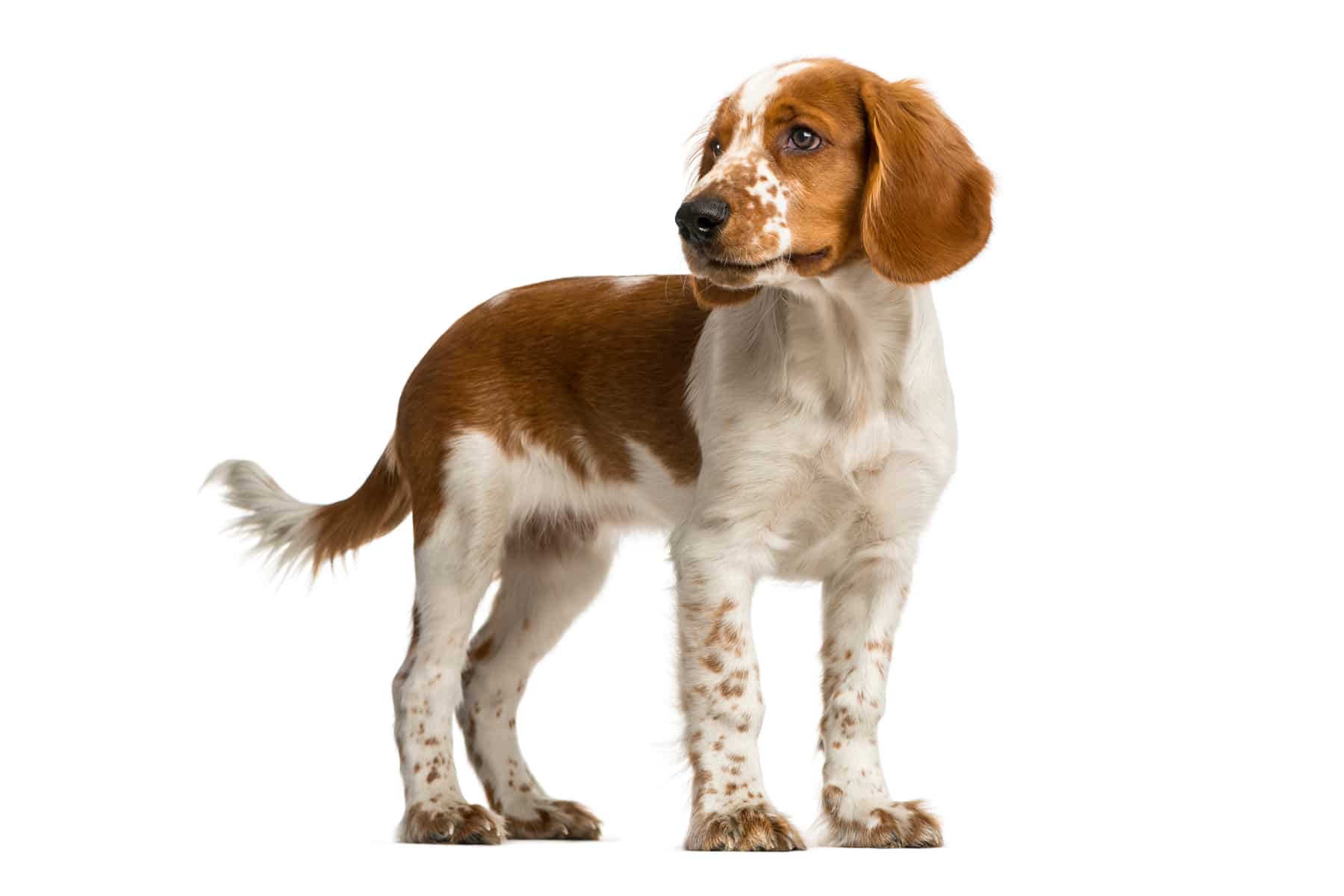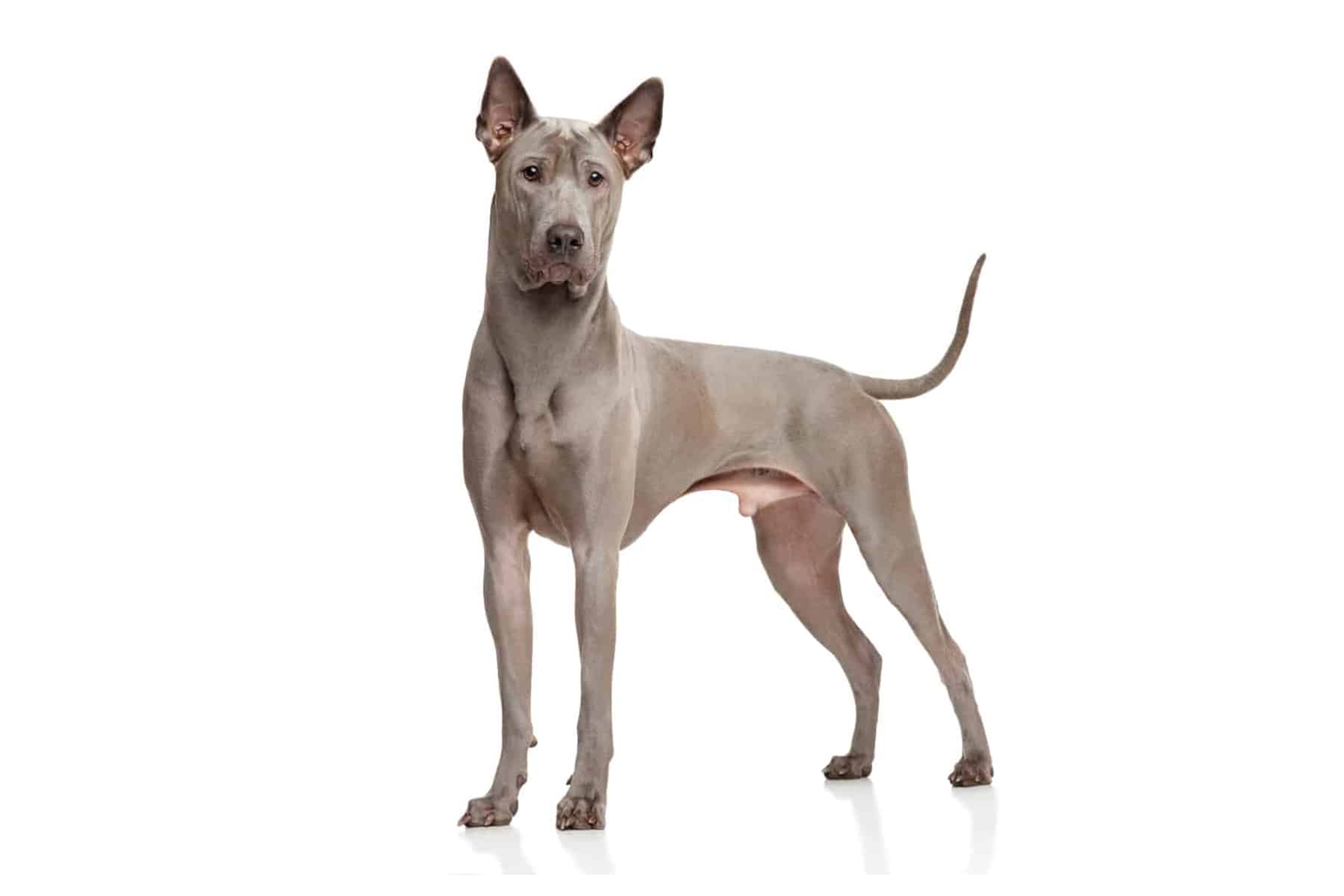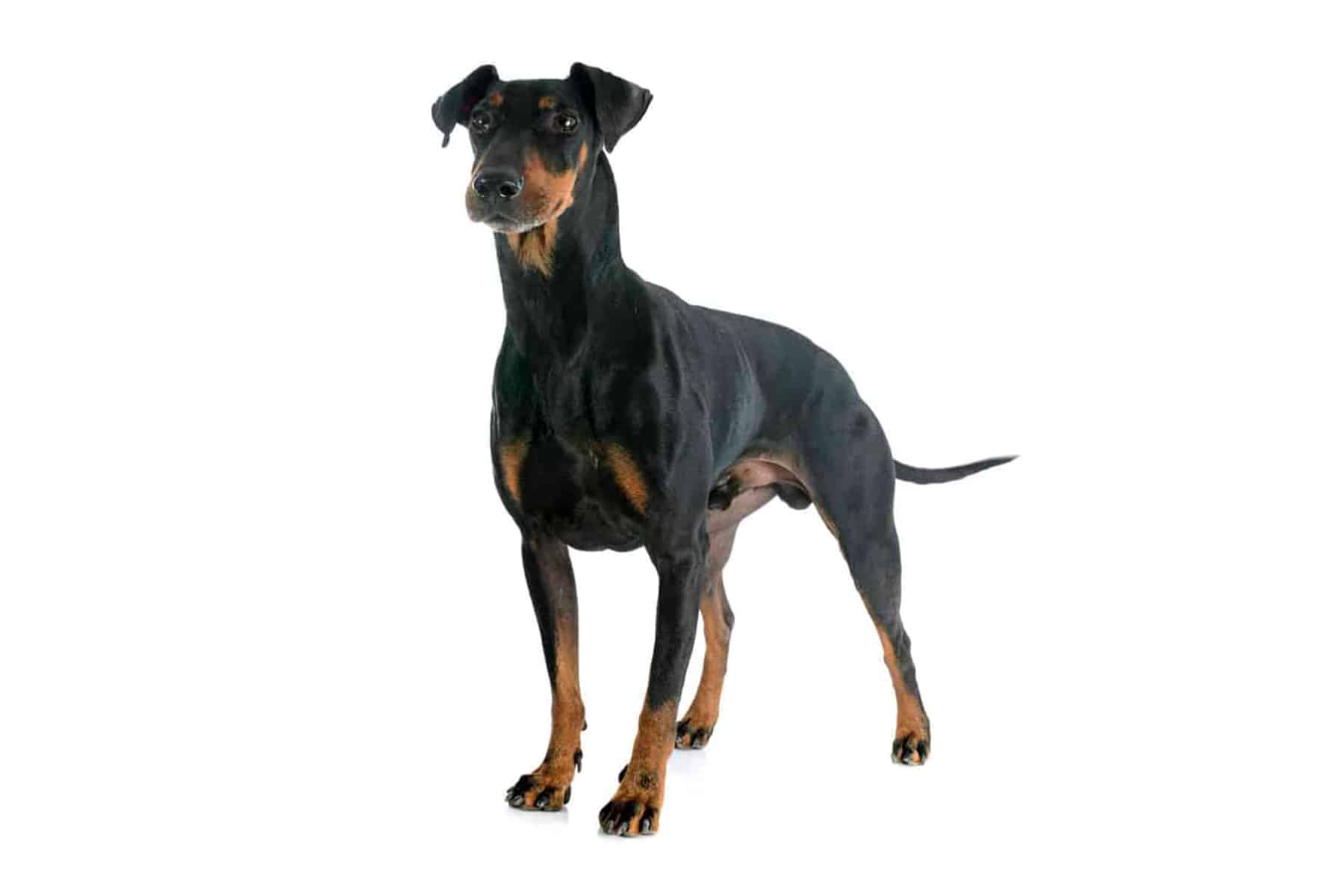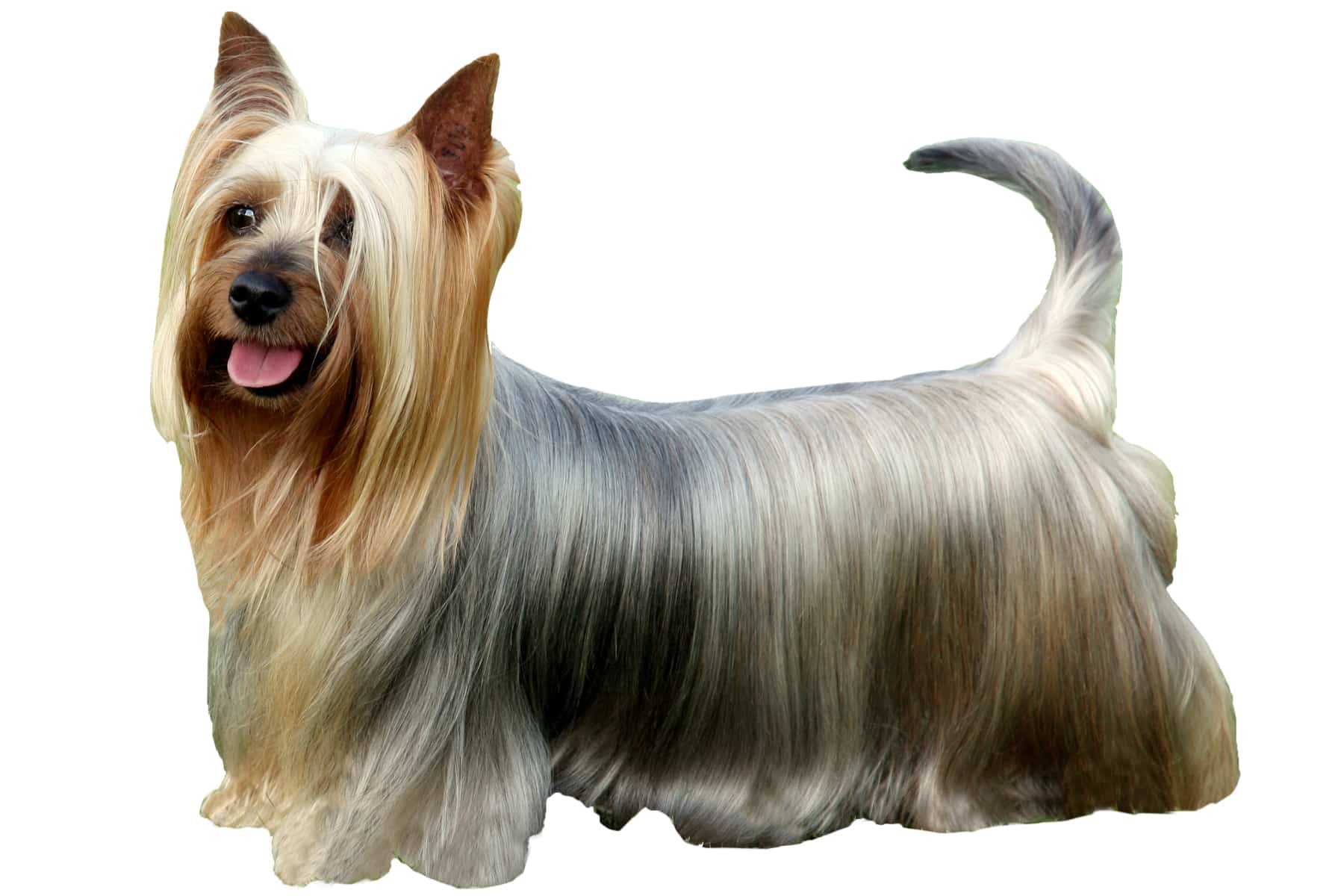Airedale Terrier
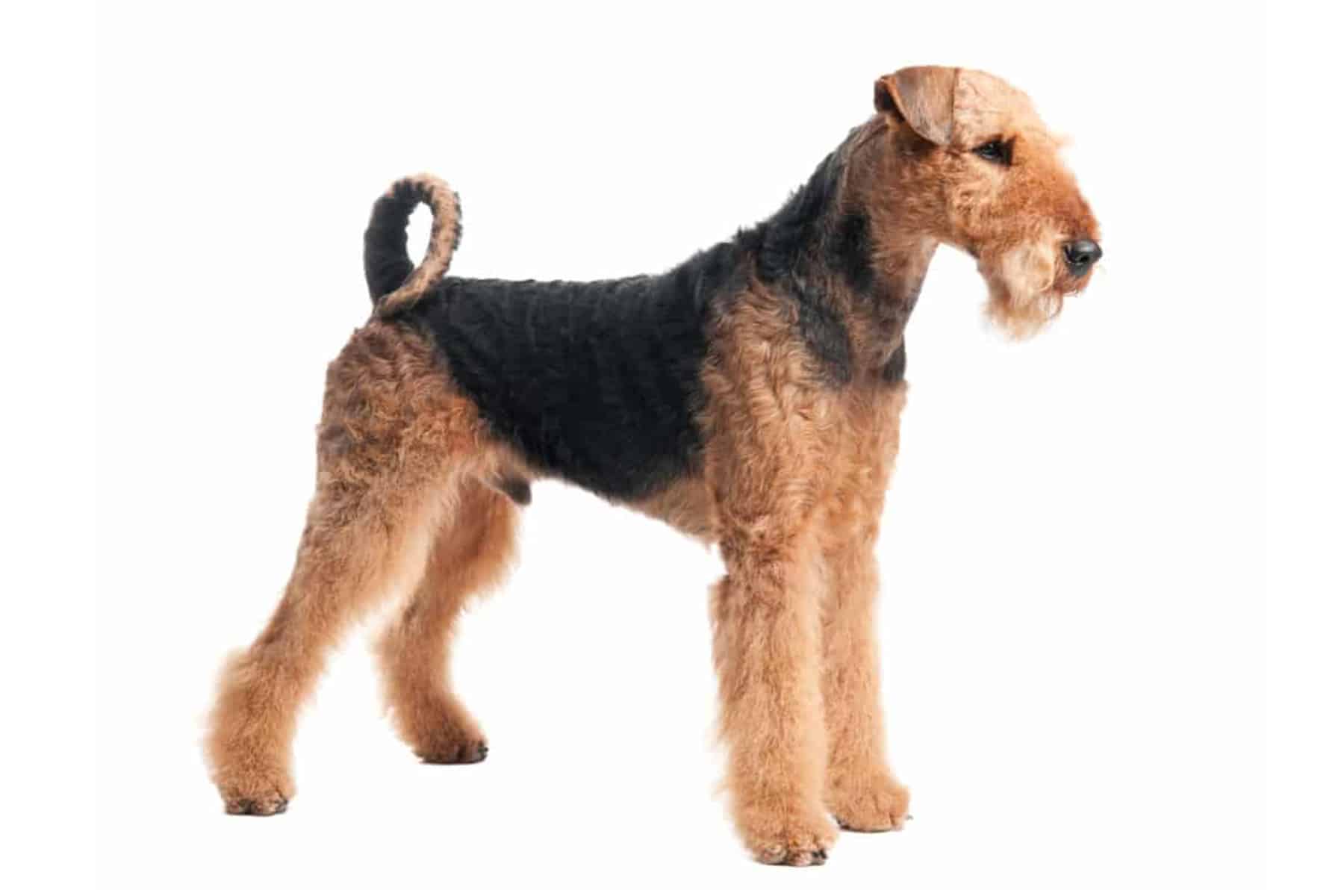
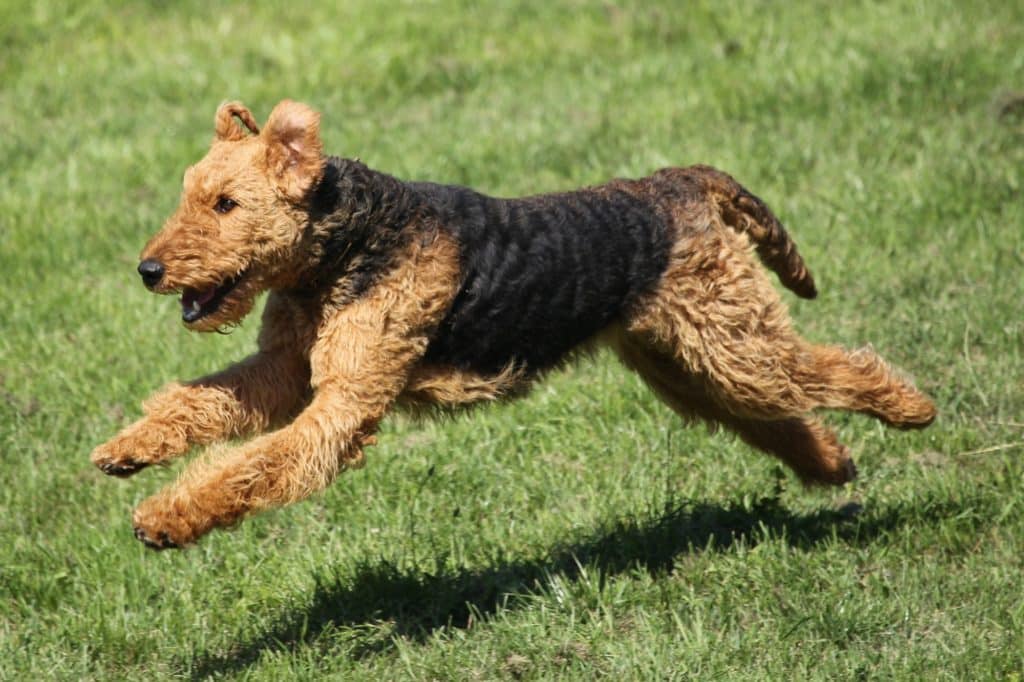
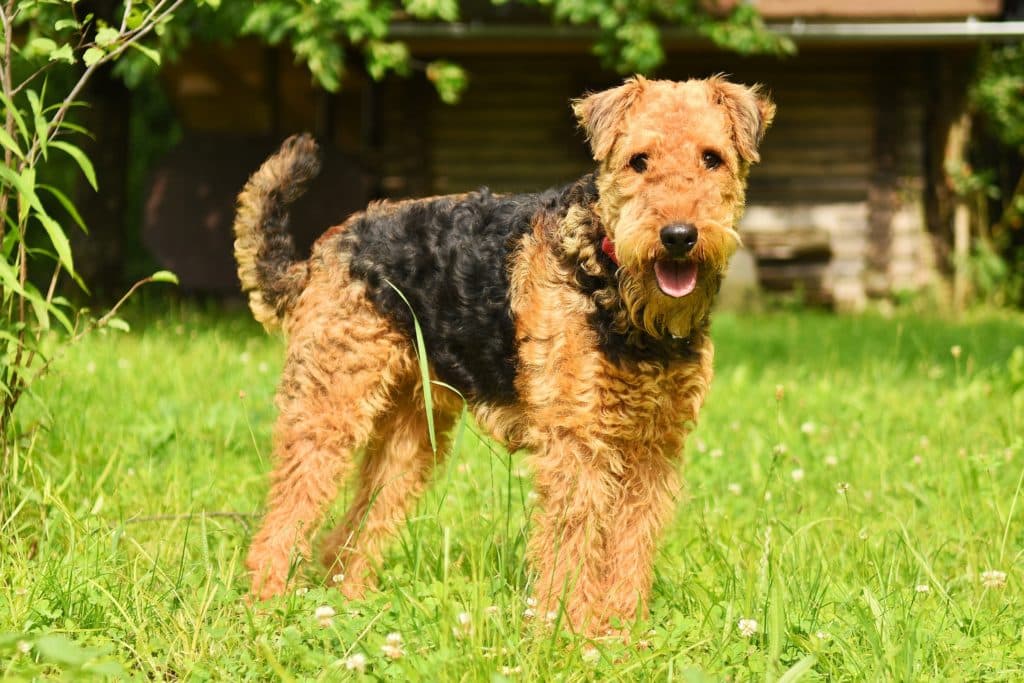
Temperament:
The Airedale Terrier is one of the largest terriers. Its special appearance makes it a lovable contemporary. Originally, the dogs were bred in Great Britain as hunting and guard dogs. Today, Airedale Terriers are popular family dogs.
Characteristics
The appearance of the Airedale Terrier is unmistakable. It has the typical long terrier muzzle with small triangular ears. The wavy coat and the almost crescent-shaped upturned tail are among its trademarks. The build is very strong and straight with fine lines.
Despite its adorable appearance, the Airedale Terrier should not be underestimated. They are active and intelligent dogs that make great companions if trained well. Beginners can easily be overwhelmed by the stubbornness, strength and extraordinary intelligence of the terrier.
Airedale Terriers are hunting and guard dogs. They are fast, agile and very alert. They should be kept sufficiently and sensibly occupied. Boredom can quickly lead to naughtiness.
They enjoy accompanying their owners on jogs or long walks. These intelligent animals make excellent riding companions. They are people-friendly and always want to be involved. The perfect dog for active singles, couples or large families.
If you want to practice dog sports such as agility or obedience, you will find a willing partner in the Airedale Terrier. They are excellent search dogs. During the Second World War, they were used to transmit messages. Even today, courses are still offered for tracking or training as a companion dog.
The true Airedale Terrier only exists in one color. The basic color is tan (light brown), back and flanks are dark grey to black. The dark back coloring extends over the back line to the tip of the tail.
The coat is dense and wiry, but never shaggy. As with all water hunting dogs, the coat forms a dense undercoat. It should be trimmed regularly.
The differences in size between males and females are not very pronounced. There is also little difference in appearance between the sexes. Males reach 58 to 61 cm and females 56 to 59 cm.
The breed had problems with hip dysplasia (HD) for some time. An attempt is being made to reduce this disease through breeding selection. Another disease of the breed is "juvenile nephropathy", or JRD for short. It is similar to poisoning and permanently damages the kidneys. The exact cause is unknown.
Setti was a popular Airedale Terrier in the GDR. He played the computer dog in the Soviet children's film "The Electronic Doppelganger" (1979). The American President Warren G. Harding also owned an Airedale Terrier. From 1921 to 1923, "Laddie Boy" was the "First Dog" in the White House.
Coat care:
Shedding:
Energy level:
Trainability:
Children suitable:
The right food
Like all dogs, Airedale Terriers need a balanced diet. This can consist of dry and wet food as well as fresh meat.
Airedale Terriers are very active. With enough exercise and opportunities to move around, they are unlikely to become overweight. However, care should be taken with treats and chews. These should never be given in excess or even out of boredom and begging.
There is a wide range of canned and dry food on the market. Frozen meat is always on offer. What you choose depends on your preferences and those of your dog. However, you should not change the food too often. Every change of food is a strain on your dog's digestion.
Every dog needs a change from time to time. Then you can give them a tasty dog sausage or fresh meat between meals. Many butchers offer special dog packages with leftovers at reasonable prices.
If you only feed dry food, you should make sure that your dog drinks well. He must have access to sufficient fresh water at all times. Dry food should never be fed in too large portions. Dry food swells up in the intestines.
It is recommended to feed dogs at least twice a day. Active dogs should never be overfed. It is best to always feed at the same time. This gives your dog security and prevents begging behavior.
Health & Care
The Airedale Terrier's rough-haired coat is adapted to hunting in water. It has a rough top coat and a dense, fine undercoat that protects it from getting cold when wet. The Airedale Terrier is one of the few dog breeds that hardly sheds any hair.
Although the top coat dies off, it becomes matted with the rest of the coat and must therefore be trimmed regularly. Airedales can be very suitable for allergy sufferers. You can either have your dog trimmed in a dog grooming salon or learn how to do it yourself. A second hand can be helpful at the beginning. It is important that you handle the clippers safely and that the dog remains relaxed.
You should also brush your Airedale well at least once a week. Hard brushes or a wire comb are suitable for this. Your dog's coat will then fall in beautiful waves and shine again.
The coat of the Airedale Terrier is naturally very resistant and forms a dense surface. Dirt, burrs or parts of plants do not stick to it easily. The long hairs on the legs and paws tend to form clumps when dirty and wet. You should brush these out immediately after every walk.
You should regularly check your dog for ticks. They like to remain undetected in the Airedale Terrier's curly coat. Tick cards or fine tweezers are suitable for removing them. These are available from pet shops or pharmacies.
Suitable accessories
The Airdale Terrier is a large dog with a slender neck. Medium-sized collars or harnesses fit him well. The collar or harness must fit this strong and agile dog well. He must not be able to wriggle out of dicey situations.
Leashes must be stable and long enough. Airedale Terriers are very eager to move. Even if they have to be walked on a lead, they should have enough freedom of movement. Extra short leads are available for the city or in crowded areas.
Flexi leashes give the dog plenty of freedom of movement. However, some dogs feel disturbed by the constant slight pull. This effect increases if the lead is attached to the collar instead of the harness. Trailing leads are a good alternative. They are available in lengths of 2.5 to 3 m.
Brushes suitable for the Airedale Terrier are hard and stable. They should fit well in the hand and have no sharp edges. Plastic brushes are easy to care for and can withstand your dog's play attacks. A wide-toothed metal comb can make grooming easier.
Airedale Terriers love to play. They respond very well to anything that squeaks and quacks. There is a large selection of plastic squeaky toys and maybe even a duck in specialist shops.
Last but not least, you should buy your dog a comfortable place to sleep. The Airedale is a large dog and needs a correspondingly large dog bed. You shouldn't cut corners here. It is better if the dog has a few centimeters of space than if its legs are hanging out.
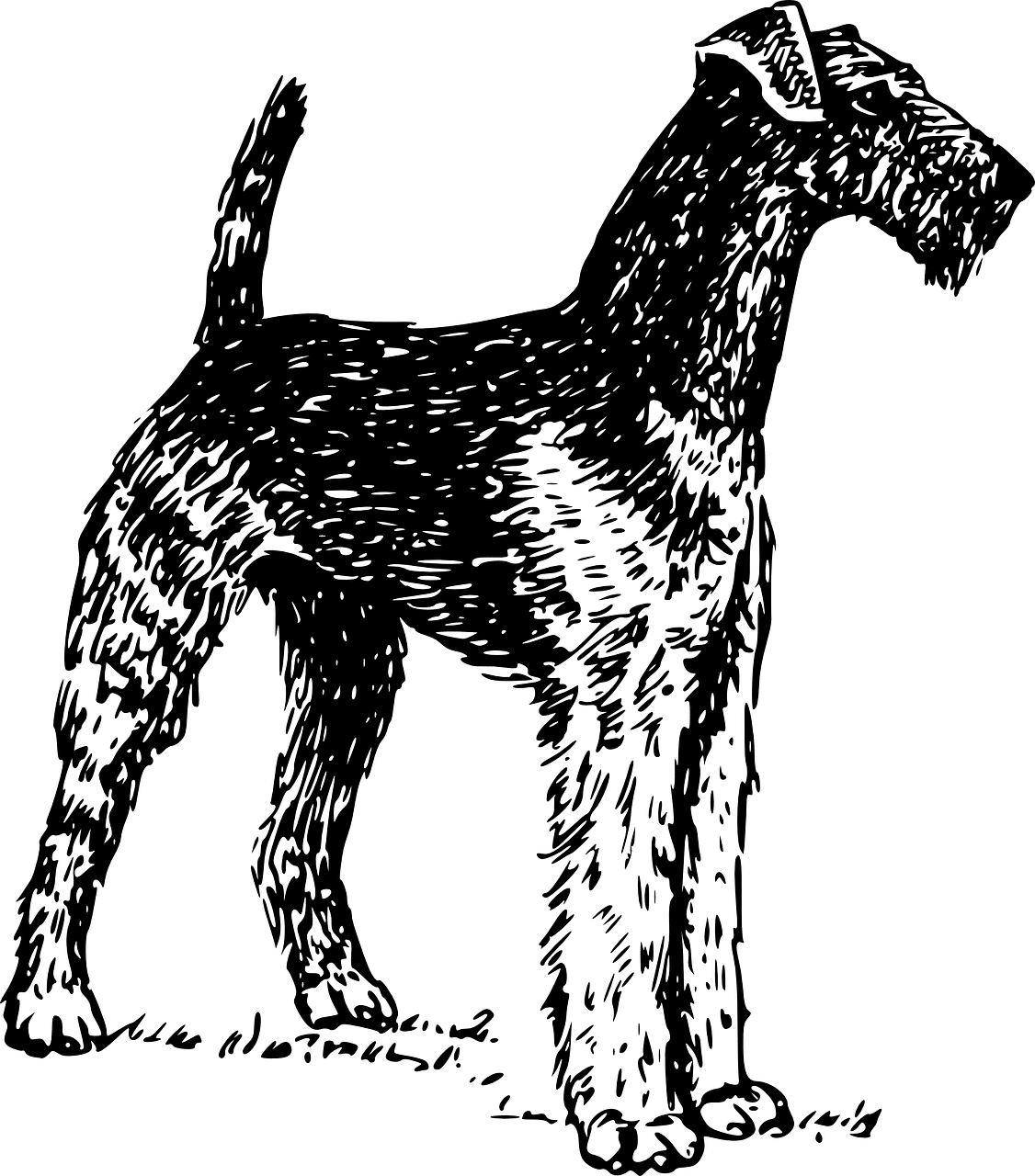
Origin & History
The breed's name is derived from the English word "dale" for valley. The Aire is a river in the English county of Yorkshire. It is assumed that the roots of the breed lie in this region. The exact details are not known, especially as the name Airedale Terrier only emerged after the breed had already existed for some time.
One of the ancestors of the Airedale Terrier is the Otterhund. These large water dogs with round heads were crossed with larger English terriers. The Airedale Terrier got its coat and coloring from the Otterhund. The profile and body lines come from the terrier.
Later, the breed was refined with Gordon Setters and Scottish Shepherds.
The "Waterside" or "Working Terrier" was first mentioned in 1875. In the same year, the first specimens were presented at breeding shows. At that time, they were still known as "Waterside" or "Bingley Terriers". It was not until a few years later that the current name "Airedale Terrier" became established.
The first mention in the studbook was in 1882 and in 1886 the English "Kennel Club" officially recognized the breed.
